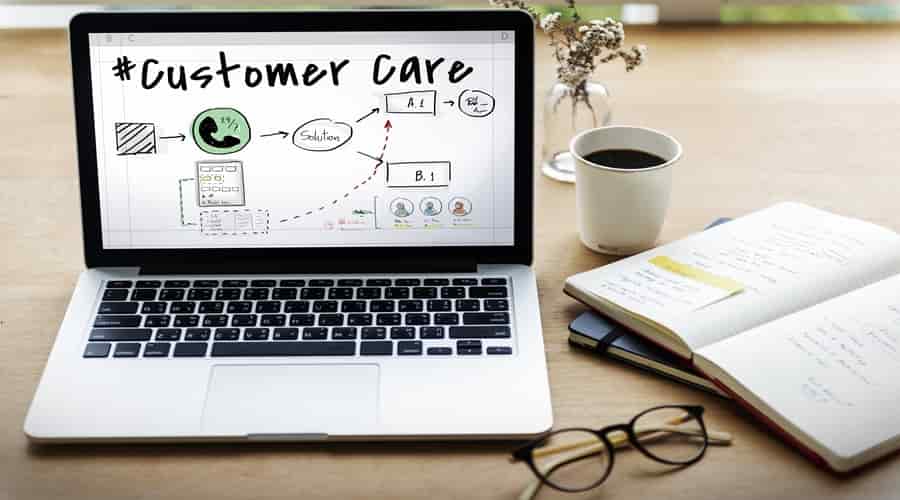
Unlocking Growth with Customer Lifetime Value in SaaS
Customer Lifetime Value (CLV) in the Software as a Service (SaaS) industry stands as a pivotal metric, shaping the strategic landscape of businesses in the digital realm. As SaaS companies navigate the competitive market terrain, understanding and optimizing CLV is fundamental for long-term success. This metric encapsulates the anticipated total value a customer will generate throughout their engagement with a SaaS provider. It offers profound insights into profitability and guiding decisions on customer acquisition, retention, and revenue optimization strategies. In this dynamic ecosystem where recurring revenue models prevail, the significance of CLV amplifies, underscoring its role as a compass for sustained growth and competitive advantage in the ever-evolving SaaS landscape.
Definition of Customer Lifetime Value (CLV)
Customer Lifetime Value (CLV) is a critical business indicator that evaluates the total predicted revenue a customer will likely create throughout their relationship with a business. CLV measure offers a thorough understanding of every client’s value to the company during their lifetime involvement.
At its core, CLV considers various elements contributing to a customer’s financial impact on the company. Initially, it factors in the revenue generated from the customer’s first purchase or subscription. This encompasses the initial transaction value, whether a one-time purchase or the commencement of a subscription-based service.
Importance of Customer Lifetime Value (CLV) in SaaS Industry
In the SaaS industry, where recurring revenue models are the norm, CLV is a critical metric for several reasons:
Insights into Customer Profitability and Long-term Value:
CLV provides priceless information on a customer’s profitability during their relationship with a SaaS provider. Businesses can evaluate the profitability of various client segments and adjust their strategies by knowing the estimated lifetime value of each customer.
Prioritization of Customer Acquisition and Retention Efforts:
CLV helps SaaS companies prioritize their efforts in acquiring and retaining customers. By identifying high CLV customers, businesses can allocate resources more effectively towards acquiring similar customers or implementing retention strategies to maximize their long-term value.
Guidance for Product Development and Pricing Strategies:
Understanding CLV guides product development efforts by focusing on the most valuable features and functionalities for high CLV customers. Moreover, CLV influences pricing strategies, ensuring that the pricing structure aligns with the value delivered to customers and maximizes revenue potential while maintaining competitiveness in the market.
Data-driven Decision-making for Resource Allocation:
CLV is the cornerstone of data-driven resource allocation decision-making in various business processes. When allocating resources for marketing, sales, or customer support, CLV helps maximize investments by focusing resources on those with the best chance of producing longer-term, higher returns.
Understanding the Components of Customer Lifetime Value in SaaS
To calculate and optimize CLV accurately, it’s essential to understand its key components:
Revenue Per User:
This indicator shows a customer’s typical revenue over a certain time frame. It includes a range of income streams, such as membership costs, advancements, and extra purchases. Understanding the income per user can help you understand how much each customer contributes financially to the total CLV.
Churn Rate:
The churn rate is the percentage of users that stop using a service or cancel their subscriptions within a predetermined period. A lower churn rate indicates greater customer retention and, as a result, a greater CLV. Optimizing CLV requires minimizing churn through efficient retention tactics.
Cost of Service:
The service cost comprises all expenses associated with acquiring, supporting, and retaining customers. This includes marketing costs to attract new customers, sales expenses related to closing deals, and customer support costs for ongoing assistance. Understanding the cost of service is critical for accurately assessing each customer’s profitability and optimizing CLV.
Strategies to Enhance CLV
Improving Customer Onboarding:
A well-thought-out onboarding procedure can decrease early churn, boost product adoption rates, and shorten customers’ time to value. Businesses can increase customer lifetime value (CLV) by prolonging customer lifetimes and ensuring that clients immediately receive value from the product.
Enhancing Customer Support:
Providing exceptional customer support experiences can foster customer loyalty, increase satisfaction, and reduce churn rates. Proactive support efforts can also identify upsell and cross-sell opportunities, further increasing user revenue and boosting CLV.
Upselling and Cross-selling Techniques:
Offering complementary products or premium features to existing customers can increase their overall spend and extend their lifetime value. Businesses can maximize revenue per user and enhance CLV over time by identifying upsell and cross-sell opportunities based on customer needs and preferences.
Leveraging Data Analytics
Predictive Analytics for Customer Behavior:
By harnessing predictive analytics, businesses can analyze vast customer data to uncover behavior patterns and trends. This enables them to identify customers at risk of churning before it happens. With this insight, companies can implement proactive measures, such as targeted interventions or personalized offers, to retain at-risk customers and prolong their lifetime value.
Segmentation Strategies:
Businesses can customize their marketing campaigns and customer experiences more successfully by segmenting their customer base according to various criteria, including preferences, behavior, and lifetime value. Businesses can reach out to specific consumer segments with tailored offerings and communications by knowing their unique requirements and preferences. This focused strategy raises satisfaction, engagement, and, eventually, CLV.
Personalization Tactics:
Personalization is becoming increasingly important in today’s fiercely competitive environment. Businesses can tailor product recommendations and marketing messaging and support interactions to each customer’s specific requirements and preferences by utilizing customer data. Stronger customer ties are formed through personalized experiences, which increase customer happiness, loyalty, and repeat business. Consequently, CLV gains ground as long as customers stay involved and do business with the company.
Customer Retention Tactics
Engagement Programs:
Implementing diverse customer engagement programs, from educational initiatives to gamification and community-building efforts, fosters enduring relationships with clientele.
By providing value-added experiences that transcend the core product or service, businesses can deepen customer engagement and bolster loyalty, ultimately elongating the customer lifecycle and augmenting their lifetime value.
Loyalty and Reward Systems:
Instituting loyalty and reward systems is a potent tool for incentivizing customers to maintain their subscriptions and enhance their lifetime value.
Offering enticing rewards such as discounts on subsequent purchases, exclusive access to premium features, or tailored perks for long-standing subscribers cultivates a sense of appreciation. It reinforces customer loyalty, diminishing churn rates and amplifying CLV.
Regular Feedback Loops:
Establishing consistent feedback mechanisms with customers is pivotal for comprehending their evolving needs, preferences, and pain points.
Active solicitation and adept utilization of customer feedback enable businesses to discern improvement areas, promptly address concerns, and elevate overall customer satisfaction.
This proactive approach fortifies the rapport between the company and its clientele and diminishes the likelihood of churn by exemplifying a steadfast commitment to fulfilling customer expectations and aspirations.
Case Studies
Case Study 1: Increasing CLV through Enhanced Support:
This case study focuses on a company that significantly raised its CLV by implementing a robust customer support strategy.
The strategy encompassed various elements, including introducing self-service resources, providing personalized assistance, and proactive outreach initiatives.
The company enhanced satisfaction levels, reduced churn, and ultimately augmented CLV by offering customers a comprehensive support ecosystem tailored to their needs.
Case Study 2: Boosting Revenue with Personalized Offers:
This case study highlights a SaaS business capitalizing on customer data and predictive analytics to deliver personalized upsell and cross-sell offers.
By leveraging insights gleaned from customer behavior analysis, the company tailored offers to individual preferences and purchase patterns, thereby increasing revenue per user and driving up CLV.
Case Study 3: Reducing Churn with Predictive Analytics:
In this example, a SaaS company effectively employed predictive analytics to pinpoint customers at risk of churning.
With this foresight, the company executed targeted retention efforts, such as personalized interventions and incentive programs, to mitigate churn and prolong customer lifecycles.
As a result, the company witnessed a notable decrease in churn rates, positively impacting CLV and overall business performance.
Technological Tools for Maximizing Customer Lifetime Value in SaaS
CRM Systems:
Centralizing client data through client Relationship Management (CRM) systems is fundamental for optimizing Customer Lifetime Value (CLV).
These technologies make it easier to track client contacts, giving businesses insightful information about their customer’s preferences and behaviors.
By utilizing CRM data, businesses can customize their approaches to improve customer relationships, spot upsell possibilities, and maximize CLV.
Customer Data Platforms (CDP):
Customer Data Platforms (CDPs) combine and unify customer data from many sources and are essential to CLV optimization.
Businesses can more effectively identify and categorize their customer base using CDPs, which offer a comprehensive perspective of customer behavior and preferences.
Thanks to improved visibility, companies can target marketing campaigns more precisely, provide individualized experiences, and increase customer engagement, which eventually raises CLV.
Automated Marketing Tools:
Platforms for marketing automation include strong features that let you customize and streamline consumer communications.
By automating repetitive marketing processes like lead nurturing and email campaigns, these solutions help firms expand their efforts more effectively.
Automated marketing technologies help retention efforts, foster customer connections, and raise CLV by timely sending relevant communications to customers.
Challenges and Solutions
Addressing High Churn Rates:
Implementing customer success programs, offering incentives, and utilizing data analytics to identify and address churn drivers are effective strategies for reducing churn and improving CLV.
By proactively engaging with at-risk customers, businesses can mitigate churn, foster stronger relationships, and ultimately extend customer lifecycles.
Balancing Cost and Quality of Service:
Finding the right equilibrium between providing exceptional customer service and managing operational costs is essential for maximizing CLV.
Businesses should invest in customer service initiatives that enhance satisfaction and loyalty while ensuring cost-effectiveness to maintain profitability and sustain long-term customer relationships.
Overcoming Data Silos:
Integrating various data sources and breaking down organizational silos is imperative for obtaining a comprehensive view of customer data.
By centralizing and harmonizing customer data across departments and systems, businesses can accurately calculate CLV and develop optimization strategies that cater to their customer base’s diverse needs and preferences.
Future Trends in CLV Optimization
AI and Machine Learning Innovations:
Artificial intelligence (AI) and machine learning will transform CLV optimization by facilitating automated customer interactions, more precise predictive modeling, and tailored recommendations.
Using these technologies, companies will be able to anticipate client wants, customize products to suit specific tastes, and provide smooth customer experiences that increase CLV.
Integration of IoT in Customer Data Analysis:
The introduction of new data streams for customer data analysis, brought about by the proliferation of Internet of Things (IoT) devices, will provide deeper insights into behavior and usage patterns.
By utilizing IoT data, businesses may obtain a more thorough grasp of how customers engage with their goods or services, enabling more intelligent CLV plans and customized experiences.
Emerging Strategies in Customer Engagement:
Future trends in customer engagement will encompass innovative approaches such as immersive experiences, gamification elements, and community-driven initiatives.
These strategies will focus on fostering deeper connections with customers, encouraging ongoing engagement, and building brand loyalty, ultimately leading to improved CLV and sustained business growth.
Example of Tool/Software which is using CLV
Kissmetrics
A customer analytics platform called Kissmetrics aids companies in comprehending, dividing up, and interacting with their clientele. Thanks to the insights it offers into consumer behavior, businesses can monitor important metrics like customer retention, churn rate, and CLV. With customer journey mapping, cohort analysis, and funnel tracking capabilities, Kissmetrics helps companies maximize customer lifetime value (CLV) and spur expansion through better marketing and sales tactics.
Salesforce
One of the top customer relationship management (CRM) platforms is Salesforce, which provides various tools and solutions to help companies manage their connections with customers and spur growth. Businesses may use predictive analytics to discover high-value consumers and tailor their marketing and sales activities to boost customer lifetime value (CLV) by utilizing tools like Salesforce Einstein, an AI-powered analytics platform. Salesforce provides enterprises with a range of marketing automation solutions, including Salesforce Marketing Cloud, that facilitate the creation of focused campaigns and gradually develop client connections.
Adobe Analytics
Adobe Analytics offers detailed insights into consumer behavior across digital platforms. Businesses can segment their audience, track and analyze customer interactions, and measure the impact of marketing efforts on Customer Lifetime Value (CLV) using Adobe Analytics. Integration with other Adobe Experience Cloud solutions like Adobe Campaign and Target enables businesses to provide personalized experiences and boost revenue growth through enhanced CLV strategies.
FAQs
What is Customer Lifetime Value (CLV), and why is it important in the SaaS industry?
Customer Lifetime Value (CLV) is a metric that calculates the total revenue a customer is expected to generate during their relationship with a business. It’s crucial for understanding long-term profitability and guiding strategic decisions in the SaaS sector, where recurring revenue models prevail. CLV informs choices about customer acquisition, retention, and revenue optimization.
How can SaaS companies calculate and measure CLV effectively?
By examining client data such as average revenue per user (ARPU), churn rate, and customer acquisition costs (CAC), SaaS organizations can compute CLV. Businesses can gain a thorough understanding of CLV and monitor it over time to assess the efficacy of their CLV optimization initiatives by combining these measures.
What are some common challenges SaaS companies face in maximizing CLV, and how can they overcome them?
High turnover rates, striking a balance between price and quality of service, and data silos are typical problems. SaaS companies may overcome these obstacles by putting in place customer success initiatives, striking the correct balance between cost and quality of service, and integrating several data sources to get a comprehensive picture of customer data.
How can data analytics and AI technologies help maximize CLV for SaaS businesses?
Data analytics and AI technologies can help SaaS businesses by providing insights into customer behavior, predicting churn, personalizing customer experiences, and identifying upsell and cross-sell opportunities. By leveraging these technologies, businesses can optimize their CLV strategies and drive sustainable growth.
What role do customer retention tactics play in maximizing CLV for SaaS companies?
Customer retention strategies, including engagement programs, loyalty and reward systems, and frequent feedback loops, are essential to maximizing CLV for SaaS organizations. By prioritizing the retention of current customers and cultivating enduring connections, enterprises can enhance their profitability and client lifetime value.
What future trends in CLV optimization that SaaS companies should be aware of?
Future advancements in AI, machine learning, and IoT integration in consumer data analysis, alongside innovative customer engagement strategies like gamification and immersive experiences, are trends to watch. SaaS businesses can adjust CLV optimization strategies to stay competitive by keeping up with these trends.
Conclusion
In conclusion, maximizing Customer Lifetime Value (CLV) in SaaS is crucial for sustained growth. Businesses can increase profitability by focusing on strategies that boost customer engagement and optimize services. Effective implementation requires understanding customer needs and leveraging technology like AI. CLV remains a vital metric, reflecting a SaaS business’s health and potential. It emphasizes the importance of retaining valuable customers and attracting new ones through strong relationships.




